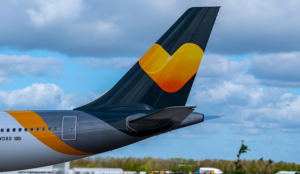UK-based travel group Thomas Cook is the latest to fail in what has been a turbulent year for budget airlines. Thomas Cook Group collapsed overnight, leaving up to 600,000 passengers stranded globally. That figure includes 150,000 Britons, and the UK government is now faced with its largest repatriation effort since World War II.
Unlike other European carriers that have gone under this year, including WOW air and more recently XL Airways, Thomas Cook was more than just an airline, it was a package tour group operator dating back to 1841. Certainly not a fly by night operation, even if the company’s name and livery are unfamiliar to many Americans.
Why Thomas Cook Failed
Recent years have proven tough for the company, creating an unstable financial situation for the travel conglomerate. While fears of Brexit may grab the headlines as its ultimate demise, the company’s failure to adjust with online travel trends and competitors solidified its downfall. As the pound sterling slid against the dollar—the standard for airline valuations like parts and leasing—the company amassed insurmountable debt.
Compounding on Thomas Cook’s debt, travelers went in search for better deals online, opted for rival lower-cost airlines, or instead were left to forgo holiday travel altogether. Leaving fewer people walking through the doors of the company's 500 plus brick and mortar stores peppered around city centers throughout the UK. Another integral component in the group’s faltering finances, rent, and staffing put the travel company in the negative, especially when compared to online competitors with less overhead.
A last-ditch effort over the weekend to secure funding of £200m (~$248 million) for the struggling organized tour agency went unanswered as the operator even turned to the UK government for a lifeline. Unwilling to help with the cash injection, the government inherits the task of flying its thousands of affected citizens abroad to home soil—codenamed Operation Matterhorn. Amongst holidaymakers whose plans have been ruined, the livelihoods of roughly 22,000 employees are also in disarray as they find themselves jobless today.
Where Did Thomas Cook Fly to in America?
While a household name across the pond, Thomas Cook’s appeal did not catch on stateside. Serving primarily as an "all-inclusive," its bread and butter was providing package deals to British clientele for leisure destinations throughout Southern Europe, North Africa, and the U.S., leaving limited availability for purchasing remaining seats on the operator's aircraft. At the time of Thomas Cook’s collapse last night the company connected several UK airport to five U.S. destinations year-round (Las Vegas, Los Angeles, New York-JFK, Orlando, and San Francisco) and two seasonally (Miami & Seattle). Competitive one-way flight tickets on available seats were often available last-minute for passengers departing the US to European airports. However, inventory, sporadic flight schedules, and the lack of brand recognition left most US customers booking elsewhere. Undoubtedly some American travelers have been affected by Thomas Cook’s abrupt collapse, though statistics on the exact number have yet to be calculated.
Related: These Airlines Offer Cheap One-Way Fares to Europe
What about Condor Airlines, Thomas Cook’s German Subsidiary?
At least for the time being, German budget carrier Condor, which has been a part of Thomas Cook since 2007, remains fully operational, with rumors swirling that the airline may soon be snatched up by Lufthansa.
Stay tuned!
Stay on top of breaking sales, fare drops, and more! Follow us on Twitter at @Airfarewatchdog. And make sure to sign up for FREE alerts to be notified when prices drop.






